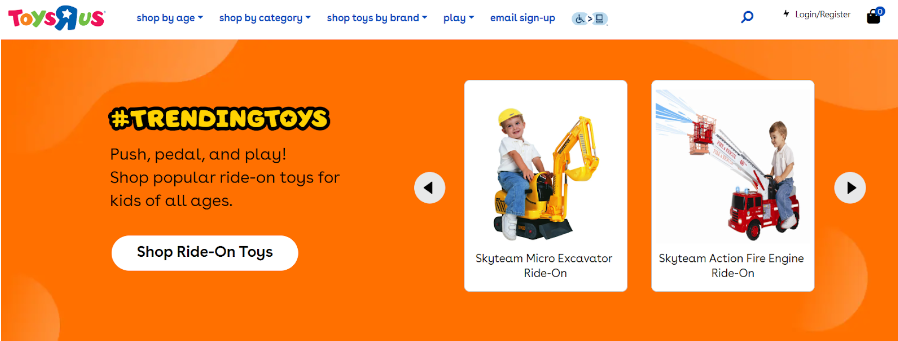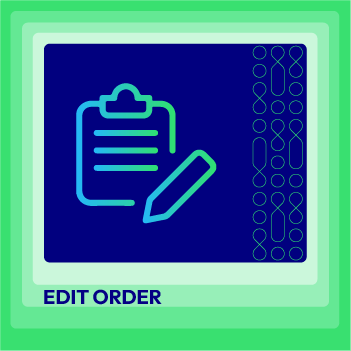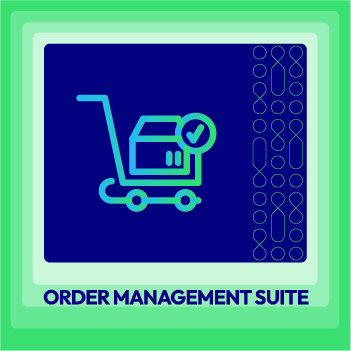The A-Z of E-commerce Fulfillment: Strategies, Tips, and Insights

Within the expansive realm of e-commerce, where every click holds the promise of a transaction, fulfillment emerges as the heartbeat of customer satisfaction. So, welcome to the world of e-commerce fulfillment, where orders transform into delightful packages that reach customers’ doorsteps with precision and care. As a consumer, everyone wants to expect fast and efficient delivery of their purchases.
So, whether you’re a budding entrepreneur or an established online retailer, you may not want to miss this article. In this comprehensive guide, we embark on a journey through the intricacies of fulfillment, unveiling the strategies that power seamless shopping experiences.
From the fundamental types of e-commerce fulfillment modes that drive modern online businesses to the step-by-step process that turns orders into smiles, we’re here to simplify the complex and equip you with actionable insights.
Let’s dive right in.
Overview of e-commerce fulfillment
What is e-commerce fulfillment?
E-commerce fulfillment refers to the process of receiving, processing and delivering online orders to customers. It involves various steps such as inventory management, order processing, picking and packing, and last-mile delivery. Mastering e-commerce fulfillment is crucial for businesses to meet customer expectations and achieve success in the competitive online marketplace.
Why is fulfillment important?
Effective e-commerce fulfillment is vital for the success of any online business. It directly impacts customer satisfaction, brand reputation, and ultimately, sales. When customers place an order online, they have certain expectations regarding the delivery time and condition of their purchase. If these expectations are not met, it can lead to negative reviews, customer dissatisfaction, and a loss of future business.
On the other hand, when e-commerce fulfillment is done right, it can result in positive customer experiences, repeat purchases, and word-of-mouth referrals.
Additionally, efficient fulfillment processes can help businesses reduce costs, optimize inventory levels, and improve overall operational efficiency.

A good fulfillment process can:
- Increase customer loyalty and retention: Customers are more likely to return and suggest a service that delivers purchases quickly, free, and reliably and allows easy returns and exchanges. A good fulfillment process can also enhance customer service by providing order tracking, communication, and feedback options.
- Reduce costs and errors: A good fulfillment process can optimize the use of space, labor, equipment, and technology to fulfill orders efficiently and accurately. This reduces inventory, order processing, packing, shipping, and return costs. It can also eliminate errors and delays that generate consumer unhappiness, complaints, and refunds.
- Enable growth and scalability: Good fulfillment processes can manage high quantities and variety of orders without sacrificing quality or speed. This can help a company grow its market, product line, and revenue. It can also assist a business respond to client preferences and seasonal or unexpected order changes.
Therefore, fulfillment is important for every e-commerce business to succeed in the competitive online market. Fulfillment is not just a logistical task, but a strategic decision that can make or break a business.
4 types of e-commerce fulfillment models
Third-party fulfillment
Third-party fulfillment involves outsourcing the entire e-commerce fulfillment process to a third-party logistics (3PL) provider. This model is ideal for businesses that want to focus on their core competencies and leave the logistics to experts.
3PL providers handle inventory storage, order processing, picking and packing, and last-mile delivery. They have the infrastructure, systems, and expertise to manage e-commerce fulfillment efficiently. This model can save businesses time and resources, allowing them to focus on core operations.
However, businesses need to carefully select a reliable and reputable 3PL partner to ensure seamless operations and customer satisfaction.
Multi-channel fulfillment
Multi-channel fulfillment enables businesses to fulfill orders from various sales channels, such as their e-commerce website, marketplaces like Amazon or eBay, and physical stores. This model requires integration between different sales channels and inventory management systems to ensure accurate order fulfillment.
Multi-channel fulfillment allows businesses to reach a wider customer base and leverage different sales channels while maintaining centralized control over inventory and fulfillment.
In-house fulfillment
In-house fulfillment involves businesses managing the entire e-commerce fulfillment process in-house. The business is responsible for receiving and storing SKUs, processing orders, picking/packing, shipping, and managing returns. This can give the business more control and flexibility over its inventory and orders, as well as more customization and personalization options for its products and packaging
However, this also requires more space, labor, equipment, and management than outsourcing to a third-party provider. It can also be more costly and time-consuming to handle large-scale or complex operations.
Dropshipping
Dropshipping is a fulfillment model where businesses don’t hold inventory themselves. Instead, they partner with suppliers who ship the products directly to customers. In this model, businesses act as intermediaries between customers and suppliers, handling the marketing, sales, and customer service aspects. This can allow the business to start selling with minimal investment and risk, as well as offer a wide variety of products without having to store them.
However, this also means having less control and quality assurance over the products and their delivery. It can also result in lower profit margins and higher competition.
Learn more: Best Dropshipping Suppliers, Companies
The Process of E-commerce Order Fulfillment
E-commerce order fulfillment involves a series of steps that ensure the smooth processing and delivery of online orders.
There are different strategies and methods for e-commerce order fulfillment, depending on the size, type, and needs of the business. However, the basic steps involved in fulfilling an order are usually the same.
Here is a summary of the five main steps of e-commerce order fulfillment:
Step 1: Receiving inventory
This is the first step of order fulfillment, where the business receives the products from the suppliers or manufacturers and checks them for quality and quantity. The products are then put away in a warehouse or storage facility, where they are organized and labeled so that they are easy to find and keep track of. The business also updates its inventory management system to show how many goods are in stock and which ones are available.
Step 2: Processing orders
The business receives an order from a customer through its e-commerce platform or website. The order is then verified and confirmed, and the payment is processed. The business also sends an order confirmation email to the customer with the details of the order, such as the order number, items ordered, shipping address, payment method, and estimated delivery time.
Step 3: Picking items
The warehouse staff locates and retrieves the products ordered by the customer from their storage locations. The staff uses a picking list or a barcode scanner to find the right products and ensure accuracy. The picked items are then placed in a bin or cart and moved to the packing area.
Step 4: Packing boxes
This is the step where the warehouse staff prepares the products for shipping. The staff inspects the products for any damage or defects and packs them securely in appropriate boxes or envelopes. They also print and attach shipping labels and invoices to the packages and seal them with tape or glue.
Step 5: Shipping orders
This is the final step of order fulfillment, where the packages are handed over to a shipping carrier or a courier service for delivery. The business also updates its order tracking system and sends a shipping confirmation email to the customer with the tracking number and link. The shipping carrier then transports the packages to their destinations, following their delivery standards and procedures.
These are the basic steps of e-commerce order fulfillment that apply to most online businesses. However, some businesses may have additional or different steps depending on their specific needs and preferences. For example, some businesses may offer customizations, personalizations, or gift-wrapping options for their products, which would require extra steps before packing. Some businesses may also handle returns, exchanges, or refunds differently from others.
Adapting Your E-Commerce Fulfillment Process
As the e-commerce landscape continues to evolve, businesses need to adapt their fulfillment processes to meet changing customer expectations and market demands. Here are some strategies to consider:
- Invest in Automation: Embracing automation technologies can streamline e-commerce fulfillment processes, reduce errors, and improve efficiency. Automated inventory management systems, order processing software, and robotic picking systems can help businesses keep up with increasing order volumes and reduce the risk of human error.
- Optimize Warehouse Layout: An efficient warehouse layout can improve order accuracy and reduce picking and packing times. By organizing products strategically, implementing efficient shelving systems, and optimizing workflow, businesses can minimize the time and effort required to fulfill orders.
- Implement Real-time Inventory Tracking: Real-time inventory tracking allows businesses to have accurate and up-to-date information about their stock levels. This helps prevent overselling, backorders, and delays in order fulfillment. By integrating inventory management systems with e-commerce platforms, businesses can provide customers with real-time stock availability and avoid disappointing experiences.
- Offer Multiple Shipping Options: Customers value flexibility when it comes to shipping options. Offering different delivery methods, such as express shipping, same-day delivery, or click and collect can cater to diverse customer preferences and enhance the overall shopping experience.
Case Studies: Successes and Failures in E-commerce Fulfillment
In the world of e-commerce, there have been both success stories and cautionary tales when it comes to fulfillment. Let’s take a look at a few case studies to understand the impact of effective and ineffective e-commerce fulfillment:
Case Study 1: Success - Zappos
Success: Zappos, an online shoe and clothing retailer, is renowned for its exceptional e-commerce fulfillment success.

Reasons for Success:
- Customer-Centric Approach: Zappos’ commitment to customer satisfaction is exemplified by its free shipping and generous return policy, instilling confidence in customers.
- Rapid Fulfillment: The company’s strategically located distribution centers enable fast shipping, often delivering orders within 24 hours.
- Diverse Product Range: Zappos’ extensive product selection and detailed product descriptions contribute to a seamless shopping experience.
- Cultural Focus: The company’s employee-centric culture leads to a motivated workforce dedicated to efficient and accurate order fulfillment.
- Innovative Initiatives: Zappos introduced initiatives like “Zappos Adaptive” for differently-abled customers, showcasing adaptability in catering to unique needs.
Case Study 2: Failure - Toys “R” Us
Failure: Toys “R” Us, a once-dominant toy retailer, experienced a notable failure in its e-commerce fulfillment efforts.

Reasons for Failure:
- Inadequate Adaptation: Toys “R” Us struggled to adapt to the growing demand for online shopping and failed to invest adequately in e-commerce infrastructure.
- Inventory Management: The company faced challenges in effectively managing inventory, leading to stockouts and a lack of popular toys during peak seasons.
- Outdated Technology: An outdated website and inefficient order processing system hindered the online shopping experience.
- Shipping Delays: Inconsistent and slow shipping options failed to meet customers’ expectations for timely delivery.
- Competition from Giants: Intense competition from e-commerce giants like Amazon and Walmart made it difficult for Toys “R” Us to compete effectively.
FAQ
Q: How long does e-commerce fulfillment typically take?
A: The time it takes for e-commerce fulfillment can vary depending on various factors, such as the location of the customer, the chosen shipping method, and the complexity of the order. However, with efficient fulfillment processes in place, businesses aim to fulfill orders within 1-3 business days.
Q: What is the role of technology in e-commerce fulfillment?
A: Technology plays a crucial role in e-commerce fulfillment. It enables businesses to automate processes, track inventory in real-time, integrate with e-commerce platforms, and streamline order processing and tracking. By leveraging technology, businesses can improve efficiency, accuracy, and customer satisfaction.
Q: How can I choose the right e-commerce fulfillment model for my business?
A: Choosing the right e-commerce fulfillment model depends on various factors, such as the size of your business, the complexity of your product range, your budget, and your long-term goals. Assessing your specific needs and evaluating the advantages and considerations of each fulfillment model can help you make an informed decision.
Q: What role does packaging play in e-commerce fulfillment?
A: Packaging protects products during transit, reduces damage, and presents a professional image to customers. Eco-friendly packaging is also gaining importance due to environmental considerations.
Q: What trends are shaping the future of e-commerce fulfillment?
A: Trends include same-day and next-day delivery, sustainable packaging, personalized experiences, augmented reality for virtual try-ons, and the continued integration of AI and automation.
Q: How do I handle returns in e-commerce fulfillment?
A: Returns management is a vital aspect. Implement a clear and efficient returns process, offer hassle-free returns to customers, and ensure returned items are properly inspected, restocked, or refurbished.
Conclusion
Mastering e-commerce fulfillment is essential for businesses to thrive in the competitive online marketplace. By understanding the importance of effective e-commerce fulfillment, adapting to changing market dynamics, and choosing the right fulfillment model, businesses can provide exceptional customer experiences, drive sales, and build a strong brand reputation. By implementing strategies and leveraging technology, businesses can optimize their fulfillment processes and stay ahead in the ever-evolving world of e-commerce.
Remember, your fulfillment process is a critical touchpoint in the customer journey. By investing in e-commerce fulfillment, you are investing in the success of your business.








![Top 20+ Must-have Shopify Apps for 2025 [Free & Paid] - Mageplaza](https://cdn2.mageplaza.com/media/blog/must-have-shopify-apps/top-must-have-shopify-apps.png)
![[2025 Updates] Top 10+ Upsell Apps for Shopify - Mageplaza](https://cdn2.mageplaza.com/media/blog/best-upsell-shopify-app/cover.png)